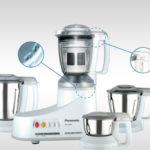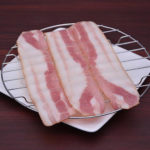If you thaw fish in the traditional way, it will take about 1-2 hours. The following tips will help you shorten the time significantly while still ensuring that the food remains fresh.
Quick Thawing Tips
Thawing with sugar
Sugar not only helps thaw meat quickly but also makes it tender and preserves its taste when cooking.
To do this: Mix cold water and boiling water in a ratio of 5:1 to create a warm water mixture of about 40 degrees. Add about 2 teaspoons of sugar to the diluted water mixture and stir until dissolved. Place the frozen meat into the mixture. After about 7 minutes, the meat will become tender.
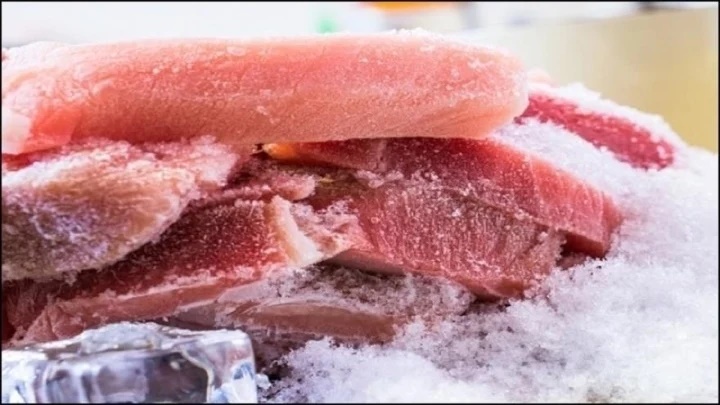
A quick thawing tip that preserves the taste
Thawing with salt and vinegar
This is an ingredient that every family has readily available and is easy to apply.
To do this: Prepare a small bowl of water, then add a spoonful of salt and a little vinegar. Stir well to completely dissolve the vinegar and salt. Then, place the piece of meat that needs to be thawed into the mixture. Do not put the meat in right away, as it will make the meat lose its flavor. Wait until the salt and vinegar are fully dissolved before placing the meat in to ensure it remains fresh and retains its sweet taste after cooking.
Quick Thawing Fish without fishy smell
Thawing fish with salt and lemon
Salt helps firm the fish meat, has antibacterial properties, and enhances the flavor when cooking. Lemon helps remove the fishy smell and makes the dish even more delicious.
To do this: First, place the frozen fish in a container. Then, add 1-2 teaspoons of salt and 2 slices of lemon. Finally, pour enough water to cover the fish and close the lid of the container. Wait for about 5-10 minutes for it to thaw, then you can immediately start preparing the fish.
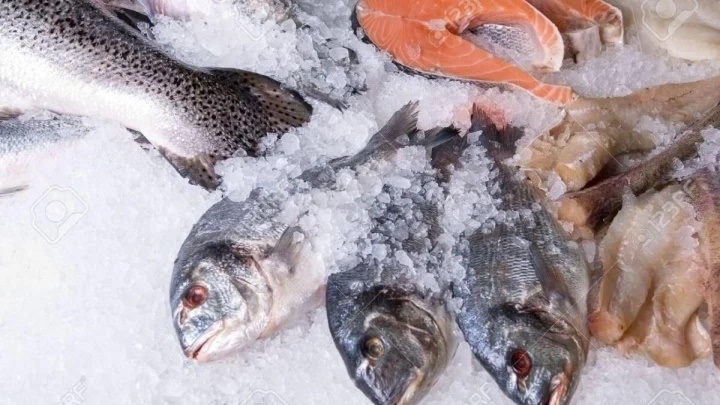
A quick thawing tip for fish, without fishy smell
Thawing with vinegar
Thawing fish with vinegar is quite similar to thawing fish with lemon. However, thawing fish with vinegar usually takes a little longer.
To do this: After washing the frozen fish, place it in a container, Ziploc bag, or a large bowl. Pour enough water to cover the fish, then add about 50ml of white vinegar. White vinegar can speed up the thawing process of the frozen fish. However, it will take about 20-25 minutes for the fish to fully thaw.
Thawing food with a microwave
In case you need a quick thawing method, you can use a microwave to heat and thaw the food. Note that when thawing, you need to remove any packaging that is not microwave-safe, such as foam boxes, plastic bags, or cardboard. Place the food in a deep container or dish with a lid or a microwave-safe cover, to prevent water from the food leaking out.
Thawing with a microwave is quite effective because the high-frequency electric field creates friction within the food itself, causing the food to heat up and thaw without breaking its cells.
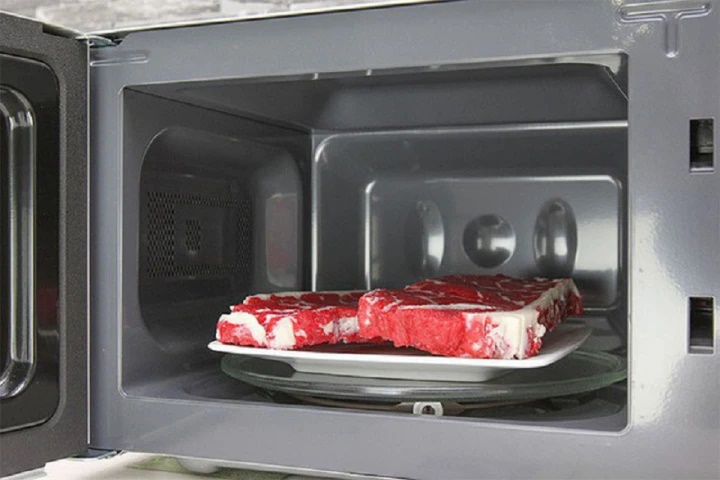
Quick and efficient thawing with a microwave
One thing to note when thawing with a microwave is the time and temperature. If the temperature is too low, the food will thaw slowly, providing conditions for bacterial growth. Conversely, if the temperature is too high, the outer layer of the food will be cooked while the inner part is still frozen. Therefore, it is important to choose the appropriate time and temperature based on the amount of food being thawed.
With this method, the food should be cooked immediately, as the meat may have started to cook slightly. In addition to meat, frozen fish can be grilled or roasted in the microwave without the need for thawing.
Things to avoid when thawing food
Letting food thaw at room temperature
Thawing food (especially meat) at room temperature can easily lead to spoilage and bacterial growth, increasing the risk of food poisoning, especially for people with weak digestion.
Thawing food in hot water
Hot water can help speed up the thawing process of food. However, high temperatures can affect the quality of the thawed food. It also promotes rapid bacterial growth and destroys the nutritional components of the food.
Refreezing thawed food
A common mistake that many people make is not using all the thawed meat and putting it back in the freezer. This method is not safe because the meat is easily contaminated with bacteria after thawing. Storing it back in the freezer will promote bacterial growth, reduce the quality of the food, and increase the risk of food poisoning.
Cooking frozen food longer than usual
Thawing by cooking for a longer time will cause the food to lose its nutritional value. Frozen food, such as meat, may not be cooked through when cooked directly. If cooked for too long or cooked repeatedly, the food may become overcooked, lose its quality, and lose its original taste.
Source: VTC.vn



























